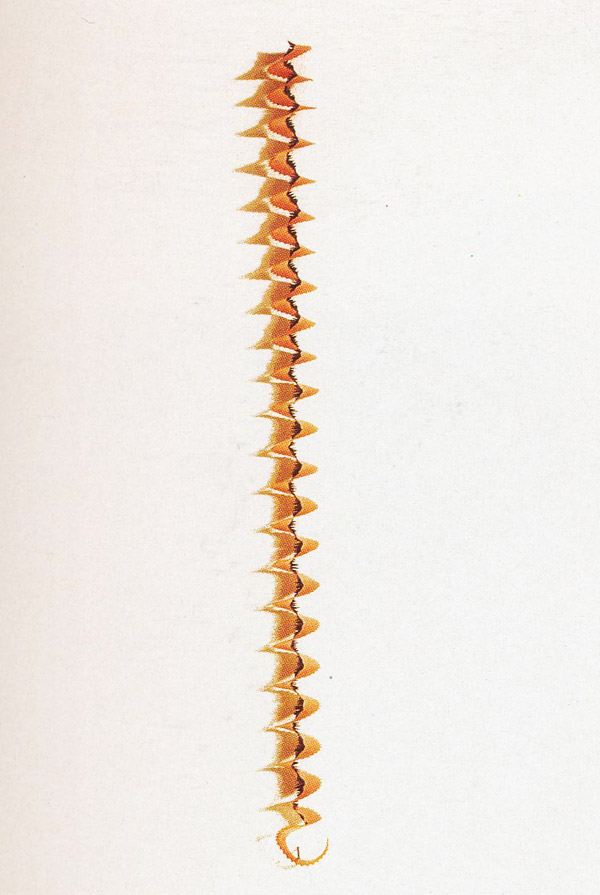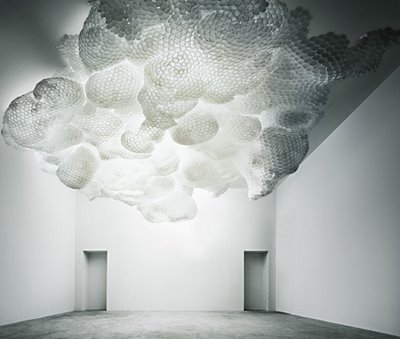Sculpture Studio Spring 2010
/Jamie Spencer-Zavos
Project 1: Process
ARTIST RESEARCH
On the surface, both Tara Donovan and Tom Friedman’s work appear interchangeable with one another. To the casual onlooker, it would not make a difference if one included a piece by Friedman in one of Donovan’s solo shows.
However despite the surface similarities, the methodologies behind the two artist’s work are in fact very different. Tara Donovan’s work is on a scale much grander than Friedman’s. Friedman is concerned with the intimacies that working on a smaller scale can induce. Friedman also likes to keep the ideas behind the work small. For example, Friedman’s “Untitled,” from 1992, (A pencil shaving that consists of the entire pencil), is not only a sculpture on a small scale, but also a small idea. The idea, (shave the pencil without it breaking), is beautiful in its own right, as critic Jeffrey Kastner puts it, “at its most successful, Friedman’s work has an intellectual subtlety that is nicely in line with its structural delicacy,” (Artforum 2006).

For Friedman, “art offers an entropic mental landscape in which all elements are constantly in flux,” (Frieze 2002). Friedman’s studio is an extension of Jung’s cottage, a physical space that is a stand in for the artist’s mind. Friedman makes this clear when he claims that he really came into his own as an artist after painting his studio white, “Friedman.. had a eureka moment when he emptied his studio, painted it white, and rebooted,” (Art Reviews 2010). He works in a small shed outside of his home where he has a space to slowly bring his ideas to life. For Friedman, his studio is where he can engage in the process of bringing his ideas to life.
Donovan too, slowly brings her ideas to life, she “spends hours experimenting with materials until she happens on something that works,” (NYT 2008). However unlike Friedman, Donovan is not concerned with her own hand appearing in the artwork (Friedman only has one assistant, Donovan has a team). Donovan’s work is mainly concerned with the relationships she can cultivate with her mundane everyday things, according to critic Suzanne Hudson, Donovan cultivates, “relationships among selfsame constituents,” (Artforum 2009). Donovan is also concerned with the relationship between the mundane everyday object as a singular thing, and the object as a network of things interacting with each other to form something new. This network in turn has a relationship with the space of the gallery, Donovan’s preferred label for her work is ‘site-responsive’ (Artnet 2006), and the viewer. The viewer also has a previous understanding of Donovan’s single object, (their own relationship with the mundane everyday thing).

A good specific example of this would have to be Donovan’s “Untitled,” from 2003, a site-responsive sculpture comprised of thousands of Styrofoam cups glued together until the shapes start to distend and form a more organic network. The viewer would enter, see a biomorphic mass, and begin assigning it qualities. They would then start to wonder about what comprises the mass, and then have a particular ‘aha’ moment when they realize that they are viewing Styrofoam cups. After this ‘aha’ moment, their relationship with the sculpture has been changed. They would then observe the properties of light. The sculpture is lit from behind. Donovan has a very interesting way of working with light. She consciously chooses to work with materials that are very receptive to lighting. She understands that light is how the viewer differentiates the differences in the object, Donovan’s work, “suggests an engagement less with architecture than with light,” (Artforum 2009). Light is also very important in helping Donovan gain the organic quality she’s after.
Both Donovan and Friedman work with changing the viewer’s perception of scale. Donovan is concerned with expanding a viewer’s sense of scale, making them see the ‘bigger picture.’ Friedman on the other hand is more concerned with contracting the viewer’s sense of scale, making them appreciate more of the everyday wonder of modern life, “Mr. Friedman is less interested in creating shattering effects than in introducing a perceptual blip or two into the everyday data flow,” (NYT 1995).
Back to Index
This page was last updated:
January 30, 2012 8:31 PM